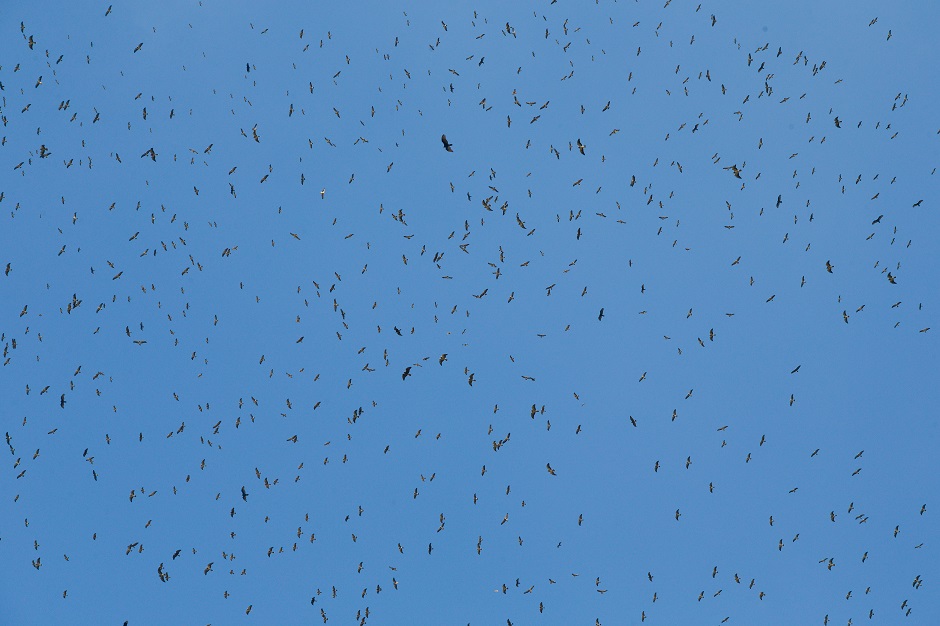Home | Tours | Trip Reports | News | Team | Calendar | Links | Contact | Store | Mailing List
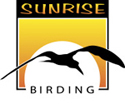 In association with Sunrise Birding LLC
In association with Sunrise Birding LLC
PANAMA RAPTOR MIGRATION
with Frank Nicoletti, October 29 - November 7, 2026
Contact gina@sunrisebirding.com to reserve your space!
Plus, Harpy Eagle Extension at Canopy Camp,
October 24 - 29, 2026>
Trip Cost> Registration Form(pdf)> Tour Registration,
Terms,
Cancellation
Policies>
Join Frank Nicoletti for the birding adventure of a lifetime to experience the excitement of tropical birding in Panama and witness one of the world’s greatest raptor migrations.
Your participation will benefit HAWK RIDGE BIRD OBSERVATORY!
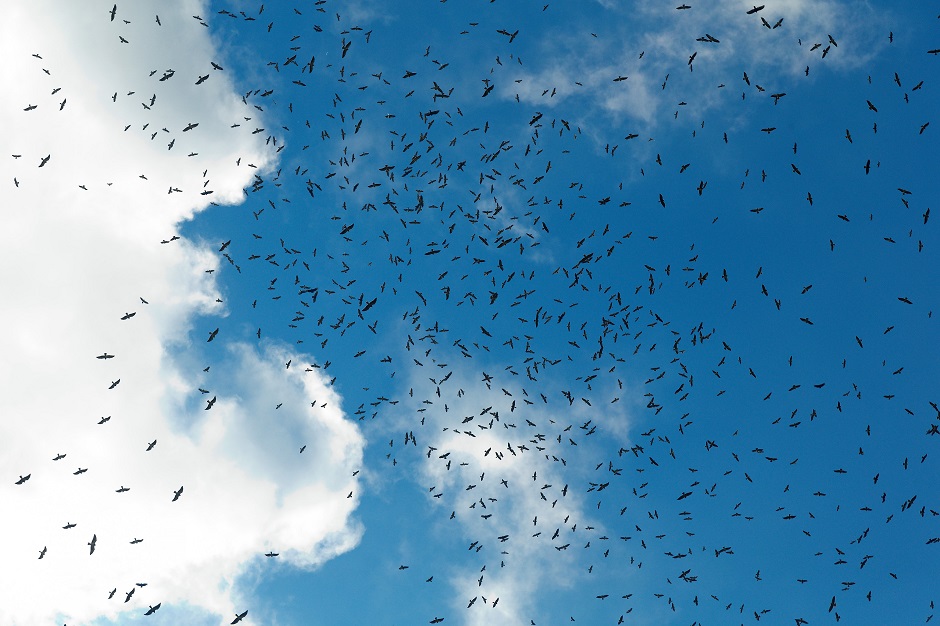
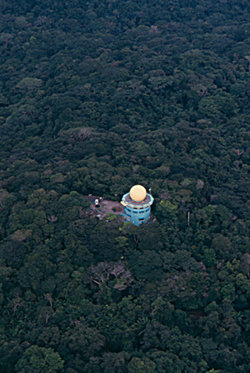 In late autumn, hundreds of thousands of raptors funnel through the narrow isthmus of Panama toward their wintering grounds in South America. This amazing hawk migration spectacle will be the centerpiece of our tour with the Observation Deck of the World-famous Canopy Tower -- the perfect vantage point to witness this raptor bonanza!
In late autumn, hundreds of thousands of raptors funnel through the narrow isthmus of Panama toward their wintering grounds in South America. This amazing hawk migration spectacle will be the centerpiece of our tour with the Observation Deck of the World-famous Canopy Tower -- the perfect vantage point to witness this raptor bonanza!
This tour begins with four nights at the world-famous Canopy Tower, located atop Semaphore Hill in the rainforests of Soberanía National Park near Panama City. From this base, you can witness the raptor migration over the tower from “Semaphore Hill Hawkwatch” an official count site for the Hawk Migration Association of North America (HMANA), as well as Metropolitan Nature Park and Ancon Hill, where millions of migrating raptors pass over every fall. Our itinerary includes Panama’s premier birding sites including Pipeline Road, Summit Ponds and Old Gamboa Road, the marshy Ammo Ponds, Old Gamboa Road and the Chagras River.
We then move west to explore the foothills and cloud forests of El Valle de Anton — the home of motmots, tanagers, hummingbirds, antpittas and the mythical Rufous-vented Ground-Cuckoo. Our stay here is at the award-winning Canopy Lodge for five luxurious nights. Each day will feature exciting bird-filled trips to the best birding sites all designed to find as many of the area’s specialties as possible!
Join us to experience a mind-boggling number of migrating hawks and the rich biodiversity of Panama!
Trip Cost> Registration Form> Go here for past trip reports>
ITINERARY:
Please note that the itinerary is flexible and may change without prior notice due to weather, alterations in habitat, birds, or other conditions.
Day 1: ARRIVAL and CANOPY TOWER OBSERVATION DECK
Upon arrival in Panama City (Airport code: PTY), our group will transfer to the highly-acclaimed Canopy Tower at the top of Semaphore Hill in the rainforests of Soberanía National Park, our home for four nights. As your luggage is being ferried to your room, you may visit the dining/bar area and enjoy a refreshing drink. Then meet on the Tower’s famous Observation Deck to begin your birding adventure. The view from the platform on the top of the tower is incredible and offers a unique eye-level perspective of the rainforest canopy. Many birds, including Keel-billed Toucans, parrots, tanagers, and hawks, plus sloths, monkeys, large basking Green Iguanas, and other animals are commonly seen. This will be your first opportunity to see huge kettles of hawks and other raptors swirling overhead!
From this vantage point you can also see ships transiting the Panama Canal, the majestic Centennial Bridge, and miles of rainforest! We will also visit the hummingbird feeders at the base of the Tower to look for Long-billed Hermit, White-necked Jacobin, Violet-bellied and Blue-chested Hummingbirds, White-vented Plumeleteer, and if we are lucky, a Snowy-bellied Hummingbird! In the evening we will enjoy our first official dinner of the tour.
Day 2:
MORNING RAPTOR WATCH: CANOPY TOWER OBSERVATION DECK/SEMAPHORE HILL
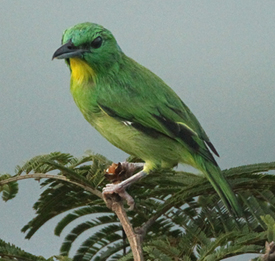 This morning we will meet up on the Observation Deck ready to witness the hawk migration. While looking for birds, will can enjoy hot coffee, tea and orange juice. Some of the bird species we hope to see from the deck include Green and Red-legged Honeycreepers, Green Shrike-Vireo, Blue Cotinga, Scaled Pigeon, Mealy and Red-lored Parrots, Keel-billed Toucan, Collared Araçari, and many different flycatchers and tanagers. Resident raptors to look out for include Short-tailed and Zone-tailed Hawks, Plumbeous and Gray-headed Kites, and even King Vulture and Black Hawk-Eagle!
This morning we will meet up on the Observation Deck ready to witness the hawk migration. While looking for birds, will can enjoy hot coffee, tea and orange juice. Some of the bird species we hope to see from the deck include Green and Red-legged Honeycreepers, Green Shrike-Vireo, Blue Cotinga, Scaled Pigeon, Mealy and Red-lored Parrots, Keel-billed Toucan, Collared Araçari, and many different flycatchers and tanagers. Resident raptors to look out for include Short-tailed and Zone-tailed Hawks, Plumbeous and Gray-headed Kites, and even King Vulture and Black Hawk-Eagle!
At this time of year, hawk migration is at its peak as thousands of Turkey Vultures and Broad-winged and Swainson’s Hawks, along with the odd Osprey, Peregrine Falcon and Mississippi Kite, fly long distances from their northern breeding grounds through the Isthmus to South America. It is impressive to say the least and the Observation Deck at the Canopy Tower is the best place to view this spectacle! The Canopy Tower “Semaphore Hill Hawkwatch” is an official count site for the Hawk Migration Association of North America (HMANA), and annually counts more than 300,000 migrating raptors over the Canopy Tower itself. The Tower’s annual Hawk Count data can be seen here: https://www.hawkcount.org/siteinfo.php?rsite=627
More than three million migrating raptors in total pass over the Isthmus of Panama. We will take every opportunity we can during this tour to view this annual event. Canopy Tower’s official hawk counter will be on the deck every day, counting the raptors passing over. Your guides and the counter will explain how raptor migration takes place, and how to count literally tens of thousands of raptors passing by, along with the ecological importance of surveying migrating hawks.
Depending on the direction of the winds, the hawk migration can be fantastic over the Canopy Tower. However, if the winds are not in our favor, we may venture to Ancon Hill in Panama City, the highest hill in the metropolitan area, where Panama Audubon counts the migrating hawks and vultures from their own observatory. On a good day, the numbers here are outstanding! Over a million birds have been known to pass over in one day during the peak of the season. Our schedule will remain rather flexible based the hawk migration conditions to make the most of this birding adventure!
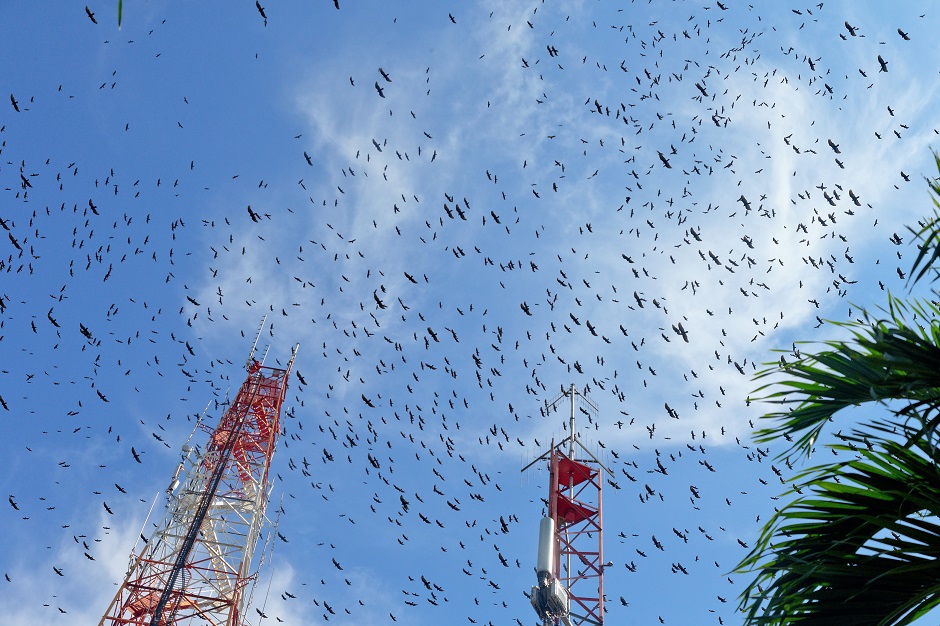
Our schedule will remain rather flexible based the hawk migration conditions to make the most of this birding adventure. This group of fascinating birds can present some identification challenges, and your guides will discuss raptor migration basics, raptor ID, how raptors migrate, where they go, raptor migration hotspots and flyways, hawk migration in Panama and the importance of counting migrating raptors. This will give you a great introduction to what to expect during our days at the Canopy Tower.
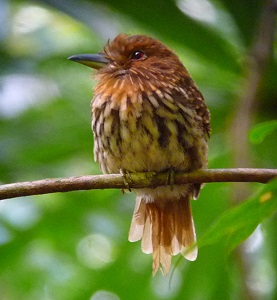 Morning: SEMAPHORE HILL ROAD
Morning: SEMAPHORE HILL ROAD
After breakfast, at mid-morning, you’ll start exploring Soberanía National Park by taking a pleasant walk down Semaphore Hill Road. This winding, shady paved road, festooned on its shoulders by wildflowers of many types, is a little more than a mile long and crosses a large creek about half-way down. There are some incredible Panama birding opportunities here, including birds from the forest interior as well as edge-dwellers. Olivaceous Flatbill, Plain Xenops, Lesser Greenlet, Black-breasted and White-whiskered Puffbirds, Fasciated and Black-crowned (formerly Western Slaty) Antshrikes, Slate-colored Grosbeak, Bay-headed and White-shouldered Tanagers, Black-throated and Slaty-tailed Trogons, Broad-billed and Rufous Motmots and even Great Jacamar may be found. Great Tinamou is often heard but harder to see. This road is also great for raptors, such as White, Tiny and Great Black Hawks. During migration it’s possible to see more than 10 species of warbler in one morning. Your morning bird list will be impressive, as we catch a ride back just in time to enjoy a delicious lunch at the Canopy Tower.
Afternoon: AMMO DUMP PONDS and ENVIRONS
The Ammo Dump Ponds are located just past Gamboa on the way to the Pipeline Road. It is the best place to see the elusive White-throated Crake, as well as a host of other waterbirds. Rufescent Tiger-Heron, Wattled Jacana, and Purple Gallinule are common, and Least Grebe and American Pygmy-Kingfisher are also resident. In this area we often find Greater Ani, Red-legged Honeycreeper, Whooping Motmot (recent split from Blue-crowned), Yellow-tailed Oriole, Southern Lapwing, Anhinga, Yellow-crowned Tyrannulet, Scrub Greenlet, Lesser Kiskadee, Black-bellied Whistling-Duck, Panama, Social and Rusty-margined Flycatchers, and even Olivaceous Piculet! Panama birding is excellent here, and you’ll definitely add to your impressive list of birds! Later in the day, we’ll head back to the Canopy Tower to review our sightings and enjoy another delicious dinner.
Day 3:
FULL DAY AT THE WORLD-FAMOUS PIPELINE ROAD
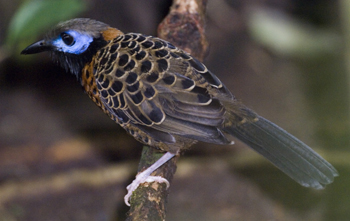 After breakfast we board the Birdmobile or El Tinamu, both open-air vehicles, to take us to the Pipeline Road, the best place in central Panama to find forest birds, and one of the premier birding spots in the world! Eight species of wren, five trogons, four puffbirds, three motmots, several tanagers, Great Jacamar, Common Potoo, Pheasant Cuckoo, Greater Ani, Gray-cowled Wood-Rail, Gray-headed Chachalaca, Forest Elaenia, Blue Ground Dove, Great and Little Tinamous and many other birds have been recorded here, even including the elusive Rufous-vented Ground-Cuckoo and the majestic Harpy Eagle! And if the
After breakfast we board the Birdmobile or El Tinamu, both open-air vehicles, to take us to the Pipeline Road, the best place in central Panama to find forest birds, and one of the premier birding spots in the world! Eight species of wren, five trogons, four puffbirds, three motmots, several tanagers, Great Jacamar, Common Potoo, Pheasant Cuckoo, Greater Ani, Gray-cowled Wood-Rail, Gray-headed Chachalaca, Forest Elaenia, Blue Ground Dove, Great and Little Tinamous and many other birds have been recorded here, even including the elusive Rufous-vented Ground-Cuckoo and the majestic Harpy Eagle! And if the 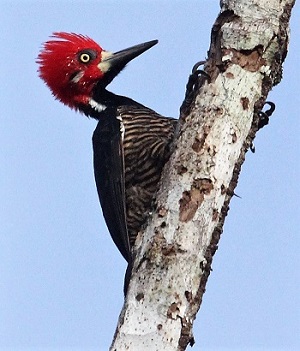 17 km road is not enough, there are plenty of side trails, plus 11 creeks and rivers that can be followed into the forest. Here will search for Streak-chested Antpitta and Black-faced Antthrush and other forest specialties. Army ant swarms are found frequently, attended by a host of birds including Bicolored, Ocellated and Spotted Antbirds. Plus, we will look for Golden-collared, Red-capped and Blue-crowned Manakins, always crowd favorites!
17 km road is not enough, there are plenty of side trails, plus 11 creeks and rivers that can be followed into the forest. Here will search for Streak-chested Antpitta and Black-faced Antthrush and other forest specialties. Army ant swarms are found frequently, attended by a host of birds including Bicolored, Ocellated and Spotted Antbirds. Plus, we will look for Golden-collared, Red-capped and Blue-crowned Manakins, always crowd favorites!
Pipeline Road is also a great place for raptors. Three forest-falcons (Barred, Collared and Slaty-backed) are resident as well as Tiny Hawk, Semiplumbeous Hawk, and Ornate and Black Hawk-Eagles, and we will keep our eyes on the skies overhead for migrants passing over the Caribbean slope. Purple-throated Fruitcrow, Black-crowned and Masked Tityras, Cinnamon and Crimson-crested Woodpeckers, Scarlet-rumped Cacique, Red-lored and Brown-hooded Parrots, Collard Araçari, Yellow-throated and Keel-billed Toucans, and Black-striped, Northern Barred and Plain-brown Woodcreepers may also be found, to name a few! We will enjoy a picnic lunch in the forest. The afternoon holds more birding in store for us as we move deeper into the forest before returning back to the CANOPY TOWER for dinner.
Day 4:
MORNING RAPTOR WATCH/METROPOLITAN PARK and ANCON HILL
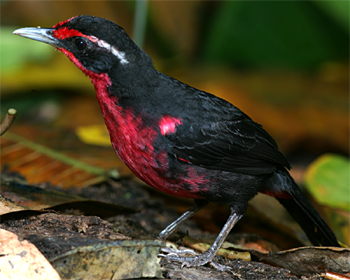 “Metro Park,” encompassing 265 hectares, has the distinction of being the only large forested park within a metropolitan capital in Latin America. More importantly, it protects 192 hectares of dry lowland Pacific Forest, yielding bird species that are difficult to find elsewhere. We will start our morning here with some high-quality birding! The beautiful Rosy Thrush-Tanager is here, as is the striking Lance-tailed Manakin. It’s also a good place to find Southern Bentbill, Rufous-and-white, Isthmian and Rufous-breasted Wrens, Dusky Antbird, Crimson-crested, Lineated and Red-crowned Woodpeckers. Plain-colored, Palm, Blue-gray and Golden-hooded Tanagers are common; Red-legged and Green Honeycreepers, Whooping Motmot, Keel-billed Toucan, Collared Araçari, Forest and Greenish Elaenias and the endemic Yellow-green Tyrannulet are resident. A mirador (overlook) along Mono Titi trail is a good spot to witness the mass migration of thousands of Turkey Vultures and Swainson’s and Broad-winged Hawks as they fly over Panama City toward their wintering grounds in South America. Once the thermals start forming by mid-morning, we will head over to Ancon Hill, where several overlooks from this promontory yield excellent views of the city as well as the hawk migration! Lunch at CANOPY TOWER.
“Metro Park,” encompassing 265 hectares, has the distinction of being the only large forested park within a metropolitan capital in Latin America. More importantly, it protects 192 hectares of dry lowland Pacific Forest, yielding bird species that are difficult to find elsewhere. We will start our morning here with some high-quality birding! The beautiful Rosy Thrush-Tanager is here, as is the striking Lance-tailed Manakin. It’s also a good place to find Southern Bentbill, Rufous-and-white, Isthmian and Rufous-breasted Wrens, Dusky Antbird, Crimson-crested, Lineated and Red-crowned Woodpeckers. Plain-colored, Palm, Blue-gray and Golden-hooded Tanagers are common; Red-legged and Green Honeycreepers, Whooping Motmot, Keel-billed Toucan, Collared Araçari, Forest and Greenish Elaenias and the endemic Yellow-green Tyrannulet are resident. A mirador (overlook) along Mono Titi trail is a good spot to witness the mass migration of thousands of Turkey Vultures and Swainson’s and Broad-winged Hawks as they fly over Panama City toward their wintering grounds in South America. Once the thermals start forming by mid-morning, we will head over to Ancon Hill, where several overlooks from this promontory yield excellent views of the city as well as the hawk migration! Lunch at CANOPY TOWER.
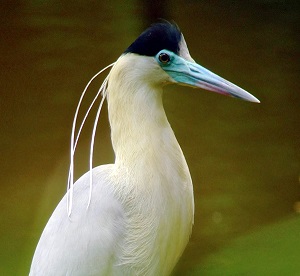 In the afternoon, we’ll bird Old Gamboa Road and the associated ponds at Summit, great places to find a wide variety of Canal Area birds. At Summit Ponds, we will scan for Green, Striated, Capped and Boat-billed Herons as well as Green, Ringed, Amazon, Green-and-rufous (rare) and American Pygmy Kingfishers, which are all resident here! We also seek out Rusty-margined and Streaked Flycatchers, Lesser and Great Kiskadees, Greater Ani, Mangrove Swallow, Bat Falcon, Cocoa Woodcreeper and Lineated Woodpecker. Going straight past the two ponds we’ll be on Old Gamboa Road, one of the birdiest spots around.
In the afternoon, we’ll bird Old Gamboa Road and the associated ponds at Summit, great places to find a wide variety of Canal Area birds. At Summit Ponds, we will scan for Green, Striated, Capped and Boat-billed Herons as well as Green, Ringed, Amazon, Green-and-rufous (rare) and American Pygmy Kingfishers, which are all resident here! We also seek out Rusty-margined and Streaked Flycatchers, Lesser and Great Kiskadees, Greater Ani, Mangrove Swallow, Bat Falcon, Cocoa Woodcreeper and Lineated Woodpecker. Going straight past the two ponds we’ll be on Old Gamboa Road, one of the birdiest spots around.
This road passes through a variety of habitats and has plenty of specialties, including Blue Ground Dove, Great Antshrike, Jet Antbird, Black-tailed, Bran-colored and Royal Flycatchers, Lance-tailed and Golden-collared Manakins and the delightful Rosy Thrush-Tanager! We also hope to find species like White-bellied Antbird, Yellow-bellied Elaenia, Yellow-backed Oriole, Boat-billed and Fork-tailed Flycatchers, Yellow-headed Caracara, Crane Hawk, Black-chested Jay and more. Spectacled Owl is a real possibility too, as the guides know where they often roost. Dinner at CANOPY TOWER.
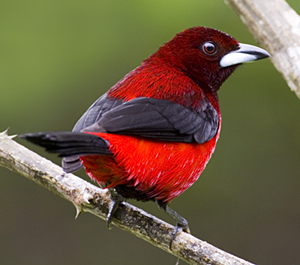
Day 5 – TRAVEL TO CANOPY LODGE
This morning we will travel to the world-famous Canopy Lodge, located in the mountains of El Valle de Antón, nestled in the cloud forests of Cerro Gaital Natural Monument. At 2,400-feet in elevation, you will immediately appreciate the noticeably cooler temperatures here! As your luggage is being ferried to your room, or after you get settled in, you may visit the dining area and enjoy a refreshing drink and snack. You will immediately want to scan the fruit feeders and grounds for birding opportunities! Crimson-backed, Blue-gray, White-lined, Flame-rumped, Dusky-faced and Plain-colored Tanagers are about, as are Red-crowned Ant-Tanager, Thick-billed Euphonia, Chestnut-headed Oropendola, Streaked and Buff-throated Saltators, Lineated and Red-crowned Woodpeckers, Red-legged Honeycreepers, Yellow-faced Grassquit, Social Flycatcher, Ruddy Ground Dove, Barred Antshrike, Clay-colored Thrush, Rufous Motmot, Rufous-tailed, Snowy-bellied and Violet-headed Hummingbirds, White-vented Plumeleteer, and Garden Emerald! Dinner at CANOPY LODGE.
Days 6, 7, 8, 9 – EL VALLE & SURROUNDINGS
We have four full days to explore the varied, diverse habitats accessible from El Valle. Our plan is to monitor bird sightings and bird the important areas below. Meals and accommodation at Canopy Lodge.
LAS MINAS & CARA IGUANA TRAILS
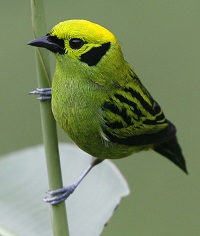 One morning a after breakfast (during which we watch for Orange-billed Sparrow and Bay Wren calling just around the dining area), we head to Las Minas, an excellent trail for Panamanian bird watching. The road follows the ridge line, with sweeping vistas of forested mountains, speckled with grasslands and small fincas. The views from here are fantastic, as on a clear day near the summit both the Atlantic and Pacific Oceans can be seen! Specialties of the region include Wedge-tailed Grass-Finch, Black-and-yellow, Bay-headed and Emerald Tanagers, Tawny-capped Euphonia, Scale-crested Pygmy-Tyrant, Spot-crowned Antvireo, Gray-headed Kite, Barred Hawk, Bat Falcon, Ornate Hawk-Eagle, Swallow-tailed Kite, Bronze-tailed Plumeleteer, White-tipped Sicklebill, Green Thorntail, Orange-bellied (Collared) and Black-throated Trogons, Tawny-faced Gnatwren, Plain Antvireo, the endemic Stripe-cheeked Woodpecker (below), Spotted Woodcreeper, Red-capped and White-ruffed Manakins, Band-rumped Swift, and Black Guan. A forested slope here is also our best chance for Black-crowned Antpitta and Black-headed Antthrush! After this birding excursion, we get back in time for lunch at the CANOPY LODGE.
One morning a after breakfast (during which we watch for Orange-billed Sparrow and Bay Wren calling just around the dining area), we head to Las Minas, an excellent trail for Panamanian bird watching. The road follows the ridge line, with sweeping vistas of forested mountains, speckled with grasslands and small fincas. The views from here are fantastic, as on a clear day near the summit both the Atlantic and Pacific Oceans can be seen! Specialties of the region include Wedge-tailed Grass-Finch, Black-and-yellow, Bay-headed and Emerald Tanagers, Tawny-capped Euphonia, Scale-crested Pygmy-Tyrant, Spot-crowned Antvireo, Gray-headed Kite, Barred Hawk, Bat Falcon, Ornate Hawk-Eagle, Swallow-tailed Kite, Bronze-tailed Plumeleteer, White-tipped Sicklebill, Green Thorntail, Orange-bellied (Collared) and Black-throated Trogons, Tawny-faced Gnatwren, Plain Antvireo, the endemic Stripe-cheeked Woodpecker (below), Spotted Woodcreeper, Red-capped and White-ruffed Manakins, Band-rumped Swift, and Black Guan. A forested slope here is also our best chance for Black-crowned Antpitta and Black-headed Antthrush! After this birding excursion, we get back in time for lunch at the CANOPY LODGE.
After lunch and some rest (if you can resist the local birds), we head to Cara Iguana Trail, where we enjoy outstanding foothill birding in some of the last remaining stands of quality Pacific dry forest. Exclusive Panamanian birding opportunities in this area include Lesser Elaenia, Yellow-olive and Panama Flycatchers, Pale-eyed Pygmy-Tyrant, Yellow-bellied Elaenia, Lance-tailed Manakin, Rufous-breasted and Rufous-and-white Wrens, Rosy Thrush-Tanager, Tody and Lesson’s Motmots, and Long-billed Gnatwren. Also resident are Striped Cuckoo, Little Tinamou, Common Potoo, Dusky and White-bellied Antbirds, Barred Antshrike, White-winged Becard, Tropical Screech-Owl and Bat Falcon. Hummers to watch for in particular are Garden Emerald, Long-billed Starthroat and White-vented Plumeleteer. During migration we look for Bay-breasted, Chestnut-sided, Black-throated Green and Worm-eating Warblers.
MATA AHOGADO ROAD
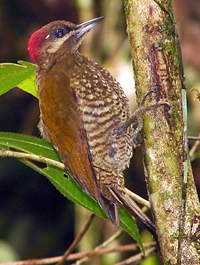 At Mata Ahogado, we will spend the time birding along the scrubby roadsides, often full of birds! Good birds here are Rosy Thrush-Tanager, Black-headed Saltator, Great Antshrike, White-ruffed Manakin, White-thighed Swallow, White-bellied Antbird, Tody Motmot, and hummers such as Long-billed Starthroat, Rufous-crested Coquette and, when the Inga is in bloom, Snowcap! We will also listen for Purplish-backed Quail-Dove and with a whole lot of luck, perhaps one will cross our trail!
At Mata Ahogado, we will spend the time birding along the scrubby roadsides, often full of birds! Good birds here are Rosy Thrush-Tanager, Black-headed Saltator, Great Antshrike, White-ruffed Manakin, White-thighed Swallow, White-bellied Antbird, Tody Motmot, and hummers such as Long-billed Starthroat, Rufous-crested Coquette and, when the Inga is in bloom, Snowcap! We will also listen for Purplish-backed Quail-Dove and with a whole lot of luck, perhaps one will cross our trail!
CERRO GAITAL
One day after breakfast, we proceed to Cerro Gaital, a steep, forested, mist-shrouded mountain that you see from the lodge! Cerro Gaital (3,500’) is the namesake of Cerro Gaital Natural Monument, which protects more than 335 hectares of mature cloud forest. This area offers sightings of Black Guan, Northern Emerald-Toucanet, Orange-bellied (Collared) Trogon, Spotted Barbtail, Common Chlorospingus, Silver-throated Tanager, Black-headed Antthrush, Slaty Antwren, Spot-crowned and Plain Antvireos, Black-faced Grosbeak, Blue Seedeater, Rufous-capped Warbler, Gray-headed Kite, White Hawk, Tawny-capped Euphonia, Pale-vented Thrush, Northern Schiffornis, White-tailed Emerald, Green-crowned Brilliant, Violet-headed Hummingbird and Crowned Woodnymph. Scaled Antpitta and Rufous-vented Ground-Cuckoo have been recorded here!
CARA IGUANA TRAIL
Another day we head to Cara Iguana Trail, where we enjoy outstanding foothill birding in some of the last remaining stands of quality Pacific dry forest. Exclusive Panamanian birding opportunities in this area include Lesser Elaenia, Yellow-olive and Panama Flycatchers, Pale-eyed Pygmy-Tyrant, Yellow-bellied Elaenia, Lance-tailed Manakin, Rufous-breasted and Rufous-and-white Wrens, Rosy Thrush-Tanager, Tody and Lesson’s Motmots, and Long-billed Gnatwren. Also resident are Striped Cuckoo, Little Tinamou, Common Potoo, Dusky and White-bellied Antbirds, Barred Antshrike, White-winged Becard, Tropical Screech-Owl and Bat Falcon. Hummers to watch for in particular are Garden Emerald, Long-billed Starthroat and White-vented Plumeleteer. During migration we look for Bay-breasted, Chestnut-sided, Black-throated Green and Worm-eating Warblers.
PACIFIC DRY FOREST BIRDING
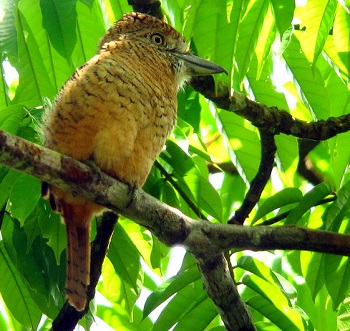 Another day a after breakfast we are off for a full day of Panama bird watching in the Pacific dry forest, with its unique cast of birds! Among the species we will be seeking out today are Yellow-headed Caracara, Roadside, Gray-lined, Zone-tailed, Savanna and Short-tailed Hawks, Peregrine and Aplomado (rare) Falcons, White-tailed Kite, and Ferruginous Pygmy-Owl. We will also search for Crested Bobwhite, Pale-eyed Pygmy-Tyrant, Golden-fronted Greenlet, Grassland Yellow-Finch, Rufous-browed Peppershrike, Barred Puffbrd, Brown-throated Parakeet, Blue Ground Dove, Red-breasted Meadowlark, Fork-tailed Flycatcher, and Crested Oropendola. We stop at a spot where we sometimes find Common Potoo.
Another day a after breakfast we are off for a full day of Panama bird watching in the Pacific dry forest, with its unique cast of birds! Among the species we will be seeking out today are Yellow-headed Caracara, Roadside, Gray-lined, Zone-tailed, Savanna and Short-tailed Hawks, Peregrine and Aplomado (rare) Falcons, White-tailed Kite, and Ferruginous Pygmy-Owl. We will also search for Crested Bobwhite, Pale-eyed Pygmy-Tyrant, Golden-fronted Greenlet, Grassland Yellow-Finch, Rufous-browed Peppershrike, Barred Puffbrd, Brown-throated Parakeet, Blue Ground Dove, Red-breasted Meadowlark, Fork-tailed Flycatcher, and Crested Oropendola. We stop at a spot where we sometimes find Common Potoo.
Hummers to be on the watch for in this unique scrubby area are the near-endemic Veraguan Mango and Garden Emerald. We enjoy a picnic lunch at a popular beach at Santa Clara where we hope to spot Sapphire-throated Hummingbird working the coastal shrubbery. You may want to bring your bathing suits to take a dip in the warm waters of the Pacific Ocean (83F/28C). On the beach or flying by may be Least, Western and Spotted Sandpipers, Sanderling, Blue-footed and Brown Boobies, Sandwich, Royal and Elegant Terns, Willet, Whimbrel, and Franklin’s and Laughing Gulls. At the Juan Hombron rice fields, we hope to find Lesser Yellow-headed Vulture, Crested Caracara, Gray-cowled Wood-Rail, Northern Scrub-Flycatcher, Southern Lapwing, Tricolored Heron, Straight-billed Woodcreeper, Pale-breasted Spinetail, Plain-breasted Ground Dove, Mouse-colored Tyrannulet, Common (or Mangrove) Black Hawk, and Pearl Kite.
LA MESA ROAD & VALLE CHIQUITO
This area, which is a visually pleasing blend of secondary forest, scrubby pastures, overgrown fincas and grassy borders, is home to many of the area’s specialties. Here we look for such great birds as Spot-crowned Barbet, Cinnamon Becard, Scarlet-thighed Dacnis, Silver-throated, Golden-hooded, Tawny-crested and Bay-headed Tanagers, Spot-crowned Antvireo, and Spotted Woodcreeper. Hummingbirds include White-tipped Sicklebill, Rufous-crested Coquette, Crowned Woodnymph, and Black-throated Mango. Also resident are Northern Emerald-Toucanet, Bran-colored Flycatcher, Scale-crested Pygmy-Tyrant, and Orange-bellied (Collared) Trogon. Lunch at CANOPY LODGE.
After lunch we are off to Valle Chiquito for more Panamanian bird watching! This valley is accessible by a newly paved road and passes through nicely forested woodlands crossed by two rivers. At Rio de Jesus we search for Green Kingfisher and listen for Sepia-capped Flycatcher. We also admire a nice colony of Chestnut-headed Oropendolas in a Cecropia tree. We try for Tody Motmot, Yellow-throated Vireo, Yellow-backed Oriole, White-bellied Antbird, Gray-chested Dove, Yellow-billed Cacique, Zone-tailed and Gray-lined Hawks, Black Hawk-Eagle, Lance-tailed Manakin, Panama Flycatcher, Black-headed Tody-Flycatcher, Little Tinamou, Long-billed Starthroat, and Garden Emerald. Wrens are abundant here, with Black-bellied, Rufous-and-white, Bay, and Rufous-breasted Wrens all lurking about in the thickets!
Our days here are sure to be bird-filled and exciting and staying at the comfortable Canopy Lodge with its beautiful accommodation and delicious food will make this a memorable birding adventure.
Day 10 – DEPARTURES FROM PANAMA
Today is sure to be the most difficult day of the trip – saying goodbye! After a leisurely breakfast, if time permits, we can do some last-minute Panamanian bird watching in the gardens surrounding the lodge. Then, we will drive back to Panamá City (3 hours or so) to catch our return flights home!
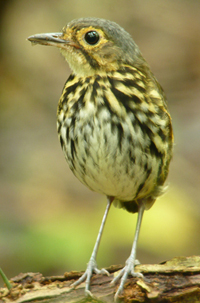
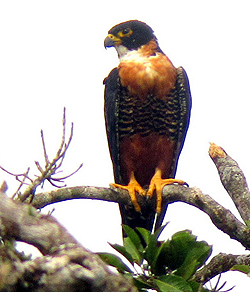
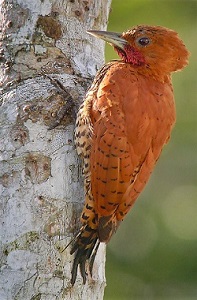
Contact gina@sunrisebirding.com to reserve your space!
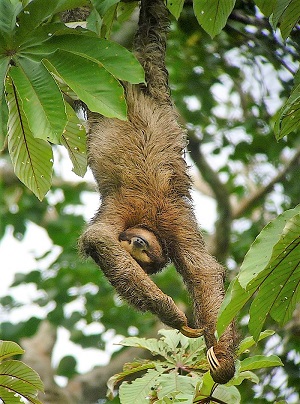 PANAMA CANOPY TOWER PANAMA CANOPY TOWER RAPTOR MIGRATION Plus Canopy Lodge October 29 - November 7, 2026 REGISTRATION FORM (pdf)> Contact gina@sunrisebirding.com to reserve your space!
REGISTER NOW! **Please note: Tour prices are based on quoted costs from ground operators (in their local currency), estimated fuel costs, and the rate of exchange the time of itinerary publication. The erratic nature to global financial markets makes it difficult to predict changes in costs and foreign currency exchange rates over the long term. Since tours are priced well in advance of the actual operation of the tour, tour costs, fuel costs and exchange rates can change, sometimes drastically. Depending on the extent of such changes, it may be necessary to implement a surcharge on this tour. If a surcharge is necessary, every effort will be made to minimize the amount. Cancellations
and
Refunds:
TRIP INSURANCE:
PLEASE NOTE:
Contact Gina Nichol at gina@sunrisebirding.com to confirm availability and hold your place. |
